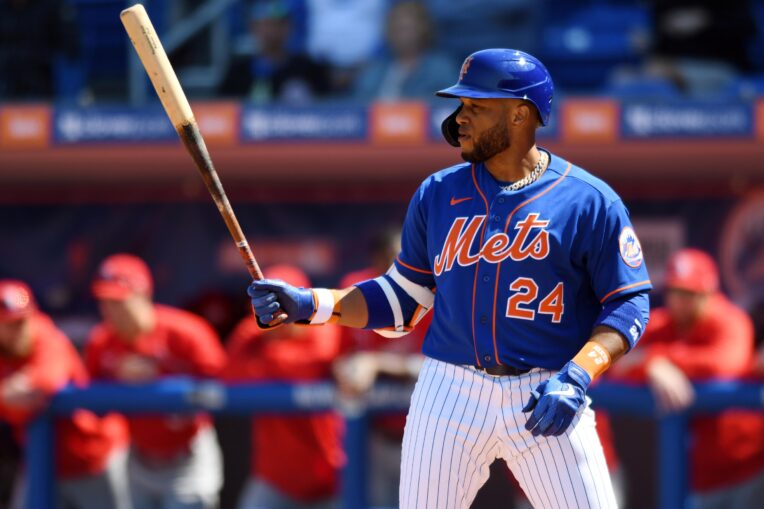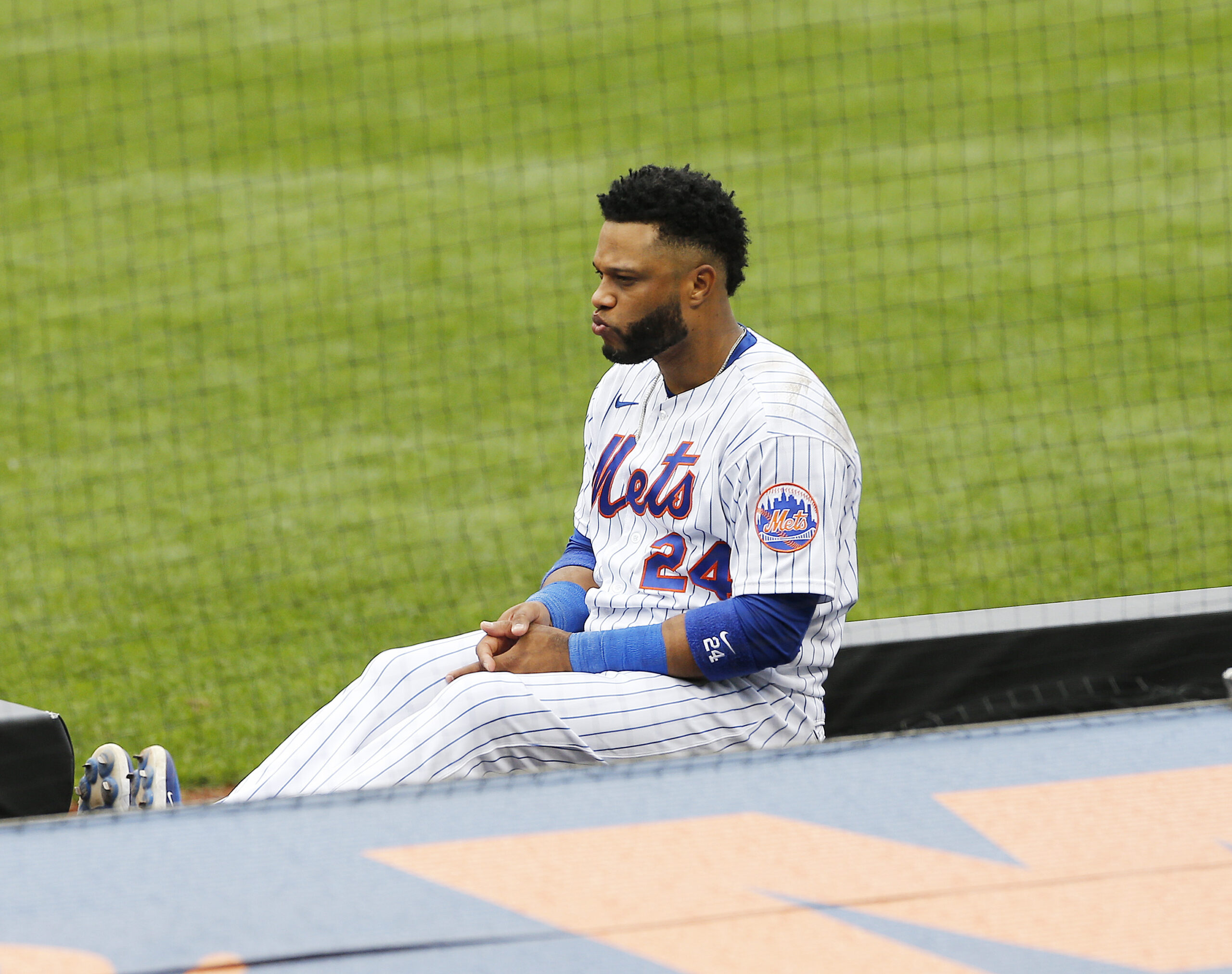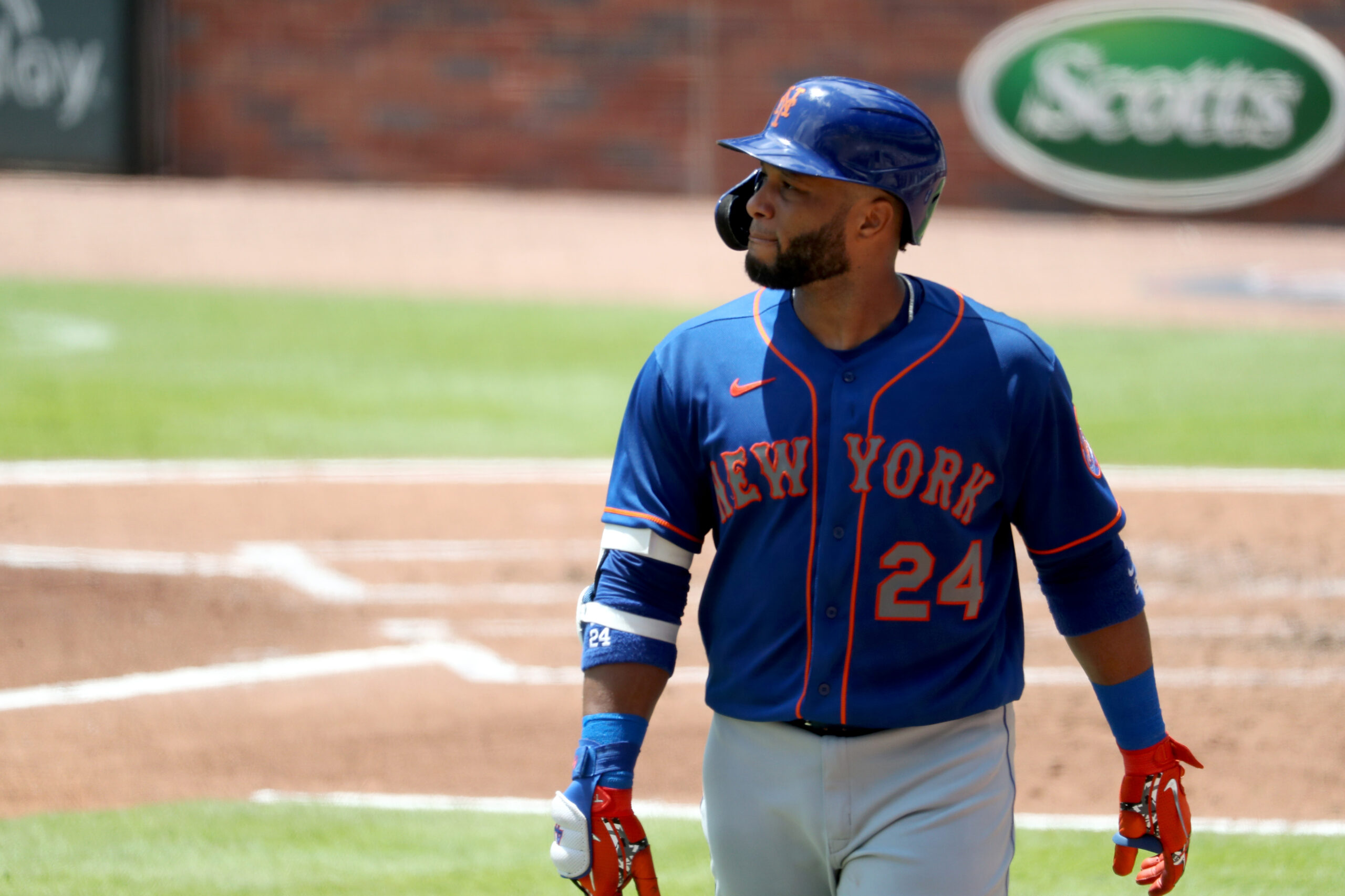
Set to enter a pivotal 2022 campaign, the New York Mets are expected to face a handful of tough decisions once this current lockout concludes, could one of them revolve around second baseman Robinson Cano?
Given that Cano is coming off his second PED suspension – his first one cost him 80 games in 2018 – and has largely been considered an afterthought for most of this off-season, it’s fair to wonder about his future with this organization.
For a franchise that’s seemingly pushed all of its chips into the middle of the table, the Mets must decide on whether or not they want to welcome Cano back into their clubhouse following his 162-game suspension. Considering the 2022 season is expected to serve as a postseason or bust type of year, this organization certainly can’t afford to take this decision lightly.
Since a new Collective Bargaining Agreement remains unsigned, New York still has a few months to internally debate this difficult situation before needing to make a final decision. So at 39-years-old, is there a possibility he could be released before next season begins?
In short, yes. But at the same time, would there be any advantages to cutting ties with the eight-time All-Star in the near future?

Credit: Andy Marlin-USA TODAY Sports
From a financial standpoint, Cano is scheduled to earn $24 million in ’22 and ’23 before his monster 10-year, $240-million contract finally expires. Thanks to a clause that was included in that blockbuster trade – the one that sent former top prospect Jarred Kelenic the other way – from the 2018-19 offseason, the Seattle Mariners are paying $3.75 million of his salary in each of the next two seasons.
As a result, the Mets are on the hook for the remaining $20.25 million that’ll be paid to him per season through 2023, according to Cot’s Baseball Contracts.
But unless Cano is suspended for a third time, which would permanently expel him from Major League Baseball, there wouldn’t be any financial benefit to releasing him before his contract runs out. Aside from getting kicked out of the league, the only other way this franchise would gain some financial relief is if he retires before the 2023 season concludes.
Of course, the Mets could attempt to trade Cano and his expensive contract, however, any potential deal would probably just prove to be a lose-lose situation as the front office would likely need to include a top prospect or two to make this move into a reality.
Along with the financial side of this dilemma, there are also several on-field ramifications this team must first consider before agreeing to allow the veteran infielder to re-enter the organization. First and foremost, he’d need to apologize to his teammates, both new and old, for cheating the game for the second time in his career.
Even if the former Mariner was willing to do that, there’s no guarantee the overwhelming response from within the clubhouse would be positive. Should the Mets put their locker room atmosphere at risk for someone who’s in the late stages of his career and has cheated the sport twice?
That question can only be answered from inside the organization.

Credit: Jason Getz-USA TODAY Sports
Then, after those topics are discussed, management would have to determine Cano’s role on the team and decide where he’d best be utilized. Would that be as a full-time infielder? As an everyday designated hitter? Or perhaps in some sort of reserve position?
Presuming the National League adopts a universal DH in the next CBA, which is likely to happen, chances are the two-time Gold Glove Award winner would spend the majority of his at-bats in that type of role. If that proves to be the case, how might that impact this club’s ability to pursue a left-handed slugger like Kyle Schwarber in free agency?
Based on his 32 home runs, .288 ISO, .554 slugging percentage, 145 wRC+ and 3.1 fWAR from last season, there’s no question New York would benefit from acquiring the 28-year-old. But would he sign on for a platoon DH role in 2022? Probably not.
A few other questions the Mets must ask themselves about Cano is: Can he still perform at a high level? And what version would they be receiving next season?
If it’s the Cano from the 2019 season that performed to just 13 home runs, 39 RBIs, a .256/.307/.428 slashing line, a 94 wRC+ and a 0.8 fWAR through 423 plate appearances, they’d probably be better off without him.
But if the 2020 version of himself arrives, which saw him post 10 home runs, 30 RBIs, a .316/.352/.544 slashing line, a 142 wRC+ and a 1.4 fWAR over just 182 plate appearances during the shortened schedule, it’d be beneficial to keep him around.
While Cano has remained active during his time away from MLB, as he’s suited up in the Dominican Winter League during this offseason and the previous one, it’s difficult to determine how much he has left in the tank. Even as a DH, the five-time Silver Slugger Award winner could struggle to perform effectively in 2022, potentially making him a liability at the dish.
In particular, the left-hander didn’t generate many walks even before his second suspension, as his measly 4.9% walk rate from 2020 ranked in the 10th percentile among all qualified hitters. Though his strikeout rate has never exceeded 17% throughout his career, he’s produced a 30% chase rate or higher in every season since Statcast tracking began in 2015, with that percentage reaching a career-worst mark (42%) in 2020.
As for his quickness, well, Cano has never been known for his speed and that certainly won’t change moving forward, especially since his 24.8 sprint speed from the 2020 season finished in the ninth percentile.

Credit: Brett Davis-USA TODAY Sports
Considering the Mets are hoping to improve in these areas next season, reinserting the Dominican native into the mix almost certainly wouldn’t help them accomplish either of those feats. More than likely, he’d hinder his team’s ability to reach base consistently while also slowing them down on the base paths.
Not to mention, how many games will Cano be capable of playing during his age-39 season? 100? 120? Less than that? Above all else, staying on the field might be one of his biggest obstacles to overcome.
If New York is to keep the veteran lefty on its roster, this opportunity could come with a very short leash as it may end up being his final chance in the majors. Nearing the end of his current contract, now is the time to say all the right things and act as a strong leader on and off the field to prove he deserves this redeemable moment – if it indeed comes to him.
As we’ve already witnessed this winter, owner Steve Cohen and the front office aren’t afraid to make roster-altering changes. With that in mind, if the 16-year MLB vet doesn’t prove worthy of this opportunity, or no longer possesses a place with this franchise, his expensive salary may not be enough to prevent them from cutting him loose.
But as the clock ticks towards spring training, the Mets must soon determine whether it’s more beneficial to pay Cano to play with the team or remain away from it.














